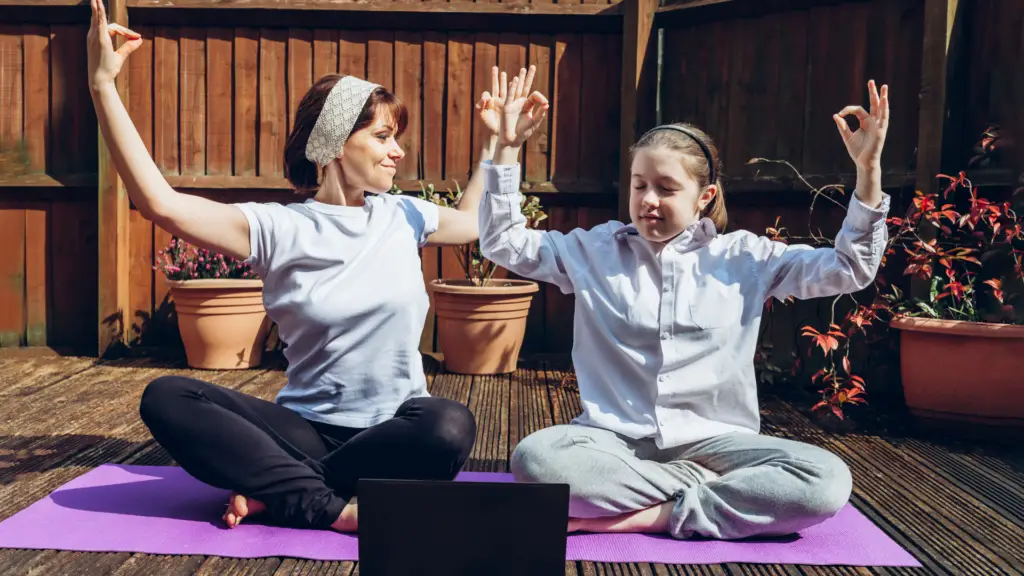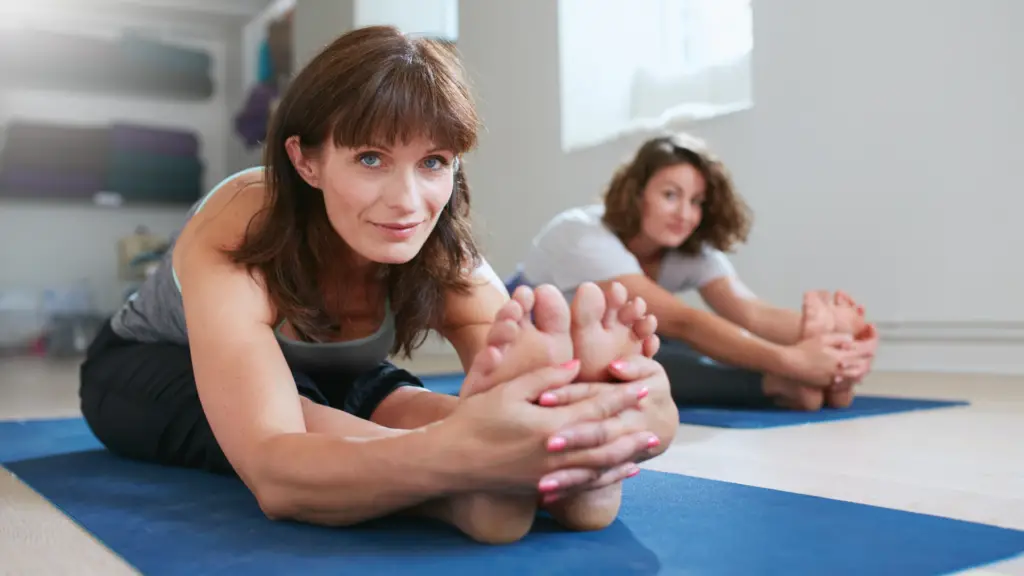Hello everyone, we hope everyone is well and keeping safe. We reached out to John Cottrell, Ph.D . again to ask him about how yoga can affect the vagus nerve. We hope you enjoy reading John’s insights on this topic as well as his previous thoughts on personality
. again to ask him about how yoga can affect the vagus nerve. We hope you enjoy reading John’s insights on this topic as well as his previous thoughts on personality and insomnia
and insomnia .
.
There is a vital nerve in the body that regulates the autonomic nervous system. It is called the vagus nerve. Before you start packing your bags for the desert town of Las Vegas to hit the casinos, enjoy the endless buffets, and watch the celebrity shows, it’s not that Vegas.
However, the two words are pronounced the same. On a more serious note: what IS the vagus nerve, and what does it do? We will examine the function of this vital nerve and how it functions in the body. We will also look at how yoga may be related to the vagus nerve.
The vagus nerve is one of the twelve cranial nerves that link the brain with the sensory and motor functioning within the body. Each of these twelve nerves has a specific responsibility.
Some deal with your ability to smell, see and hear. Others control muscle movement through your head and neck.
The word “vagus” comes from the Latin meaning “wandering.”
This is an appropriate name for this tenth cranial nerve because it is the longest one; it runs from your brain stem, passes through the face, runs down through the chest, and ends up in the abdomen and colon area.
Being part of the autonomic nervous system , the vagus nerve’s role is to help maintain our internal organs
, the vagus nerve’s role is to help maintain our internal organs and their regular functions. This autonomic system can be broken down into two additional systems: the sympathetic nervous system and the parasympathetic nervous system.
and their regular functions. This autonomic system can be broken down into two additional systems: the sympathetic nervous system and the parasympathetic nervous system.
Describing these two areas will give you a good understanding of how your autonomic system works.
The Sympathetic Nervous System
If you’re familiar with the “fight or flight” response, you know a little something about the sympathetic nervous system. This is the usual stress response.
Under potential harm or threat, your heart rate increases, your pupils dilate, your muscles tense, your palms sweat, your breathing increases, and your bloodstream is flooded with cortisol.
These are all ways that your body is preparing to manage the stress stimulus. The “fight” refers to your body getting ready to fight off the potential danger. The same bodily response, though, also prepares your body to “fly” from the situation; to flee from the threat at hand.
When there is no foreseeable danger, your body returns to a baseline: standard heart rate and pulse, healthy breathing, etc.
It is common for the same sympathetic nervous system to be triggered by what we consider “everyday circumstances.” These may be things like giving a presentation at work, singing in front of an audience, writing a book report for school, or even walking into a yoga class for the first time.
These would not be considered life-threatening situations, but your body responds in the same way. If the body perceives typical situations as harmful, then it remains in a state of “fight-or-flight.” This could result in some potential decline in health if the body is always responding to stress.
Cortisol, the stress-related hormone, releases into the bloodstream. Its function is to raise glucose (sugar) in the brain to make on-the-spot decisions. In the same fashion, adrenaline provides the necessary energy in the body to move quickly in case of the fight or flight situation.
When these functions are active, though, it suppresses other features of the body. For example, your immune system, your digestive system, and your reproductive system all take a back seat when the body responds to stress.
These can lead to other health concerns : weight gain, chronic headaches, insomnia, memory problems, symptoms of heart disease, depression, and anxiety.
: weight gain, chronic headaches, insomnia, memory problems, symptoms of heart disease, depression, and anxiety.
The Parasympathetic Nervous System
The parasympathetic nervous system needs to activate when the sympathetic component is overstimulated. This is the other part
needs to activate when the sympathetic component is overstimulated. This is the other part of the autonomic nervous system. Its function is to relax your muscles, slow down your heart rate, and manage your breathing.
of the autonomic nervous system. Its function is to relax your muscles, slow down your heart rate, and manage your breathing.
It is sometimes called the “rest and digest” functioning of the body. It puts the body and mind in a place of ease; it regulates the body toward a baseline level of functioning. These nerves are situated in the lumbar spine (lower back area) and the brain (cranial nerves).
They regulate the digestive process of the body and help to regulate your heart rate when it is high. Ideally, we want this system to be running smoothly; it keeps the body and mind balanced and running efficiently.
How Does the Vagus Nerve Relate to Yoga? 🧘

The parasympathetic nervous system is most related to the vagus nerve since these nerve fibers are cranial. They are most involved with decreasing blood pressure and heart rate, regulating your breath, and inducing a sense of calm and relaxation.
If you know a little bit about yoga practice, these are some of the results people experience when they go to yoga classes consistently.
Yoga has been known to have many benefits. It’s an exercise of sorts that involves moving through specific postures and sequences. Yogis attend classes like these to gain more flexibility in their tight muscles, improve their energy and strength, and practice mindfulness.
Generally, yoga is seen as a physical practice, something that raises the energy in your body. There are a variety of yoga styles that have this as the intention and focus. There are also less physical yoga practices; they have more of a meditative and restorative nature to them.
These mindful practices are intended to ease the body and mind. How do these various styles of yoga, then, affect the vagus nerve?
Some Yoga History

Yoga started as a verbal and written philosophy more than 5,000 years ago. Originating in India, it was a Hindu practice of achieving enlightenment through dedicated self-study.
The ancient texts were used as reference documents for the Vedic priests to teach about wisdom, knowledge, mindful, and healthy living. These documents served a particular intention: to be more spiritually connected with the Divine.
To make that goal possible, students had to learn about the things that blocked their direct path toward enlightenment. During these early inceptions of yoga, moving through poses on a yoga mat had not yet been conceived.
It had more of a college classroom feel; yoga students attended lessons in temples and learned from the Vedic priests.
These ancient yoga teachers had an awareness and knowledge about the distractions of the world in which they lived. To be in alignment with the Divine, one needed to rid himself of those distractions. Prayer and meditation were the means to enlightenment.
Although there may not have been the complete knowledge about the science of the nervous system at this time, it was clear that lifestyle stress impinged on seeking clarity.
Life, in general, was full of obstacles that caused stress – a definitive physical distraction on the course toward divinity. And since stress has such an overwhelming effect on the mind and body, it was later developed in the yoga tradition to add physical movement.
The physical practice of yoga, known as asana, was another tool to release the body of distraction to reach its ultimate goal.
In this more modern era of yoga, the practitioner learned and experienced that engaging in yoga postures and moving through specific sequences (Vinyasa) both stretched and strengthened muscles.
Movements helped to reduced fatigue and joint pain. It allowed one to feel more flexible and mobile. Yoga was seen to eliminate some of these internal strains that inhibit the body.
With such physical exercise, the body can feel more relaxed; tension and pain dissipate, reducing the stress that can accumulate in the body.
The Science of Breathing in Yoga

Now that we know much more through the advancement of science, we can see the relationship yoga has with your physical health. Research continues to show how yoga improves the wellness of the yoga practitioner.
Meditation, specifically, has a direct effect on the autonomic nervous system, in particular the sympathetic nervous system. Since muscle tension, anxiety, and depression trigger the “fight or flight” response of the sympathetic nervous system, action needs to be taken to stabilize this condition: the activation of the parasympathetic nervous system.
Meditation is known to slow the heart rate, regulate your breathing, reduce your blood pressure. It has a calming and soothing effect that balances the brain and body.
that balances the brain and body.
Pranayama, or the breathing exercises associated with yoga and meditation, is the key to this overall positive effect on the body and mind.
Controlled breathing efforts are directly connected with how your autonomic nervous system works. Remember, the vagus nerve is part of the autonomic nervous system and regulates your breathing.
Slowing down the pace of your breath, for example, slows down your heart’s rhythm and breath expenditure.
Other studies show that meditation is directly connected to brain function changes, particularly neural functions in the cerebral cortex. The slow, deep breathing component of the meditative practice reduces the symptoms of anxiety and depression.
It’s the cerebral cortex that regulates your moods. What occurs in meditation is that these regions of the brain thicken. This is a positive and healthy result. The thickening of the cortical region contributes to improved memory, better mood control, language, attention span, and more.
The thickening of the cortical region contributes to improved memory, better mood control, language, attention span, and more.
When you’re able to regulate your mood, your body is better equipped to manage the harmful effects of stress.
Is there Vagus Nerve Yoga? 🧘

Since we see evidence of how physical yoga practice and meditation affect the vagus nerve as part of the overall autonomic nervous system, the question is: does Vagus Nerve Yoga exist? Is there a specific yoga practice that is designed for the improvement of the vagus nerve function? And if it does exists, what would it entail?
and meditation affect the vagus nerve as part of the overall autonomic nervous system, the question is: does Vagus Nerve Yoga exist? Is there a specific yoga practice that is designed for the improvement of the vagus nerve function? And if it does exists, what would it entail?
If you went to a yoga class and looked for Vagus Nerve Yoga on the schedule, you probably would not find it. There isn’t a specific practice called Vagus Nerve Yoga. But as already stated from the history, philosophy, and evolution of yoga about health and wellness, yoga does influence the vagus nerve.
If there were such a specific yoga class like this, it would most likely involve breathing or Pranayama. Because we know how the sympathetic nervous system becomes over-stimulated in even the most ordinary life experiences, there is a need for a re-balancing in the mind and body.
Pranayama, when broken down into two parts, means “life force” (Prana) and “control” (Yama). Essentially, the word refers to control of the life force; in this case, it is your breath. In these types of exercises, you are manipulating your breath to bring more awareness to yourself and generate healing and clarity.
In a Vagus Nerve Yoga class, you may learn particular pranayama exercises that slow down your breath’s pace to activate the parasympathetic nervous system. There are three main components in pranayama breathing: Purak (inhalation), Kumbhak (retention), and Rechak (exhalation).
In most breathing exercises, you will experience these aspects. You will often take a full breath in; this may be in through your nose or mouth. In some cases, you will hold the breath for several seconds.
Then you will release the breath through your nose or mouth. These breaths may be slow to generate a sense of calm and ease in your mind and body.
Ujjayi Breathing
Specific practice is called Ujjayi (oo-JAH-yee) Pranayama. It means “victorious breath.” It is using the muscles of your throat to control the inhalation through your nostrils. You will generate an oceanic sound that is quite calming.
With enough practice, you will be able to take prolonged, deep breaths that fill your lungs. With the same breath control, the exhale is released slowly. Although it is called a victorious breath, it stimulates the vagus nerve to activate the parasympathetic nervous system.
The result is the “rest and digest” response needed to establish more balanced wellness in your bodily system.
Breathwork may not be the only focal point in a Vagus Nerve Yoga class. You will also perform yoga postures to offer a deeper connection with your body.
class. You will also perform yoga postures to offer a deeper connection with your body.
Often, you are not always aware of your body when it is in a state of stress. It has become such normalcy in how you feel. Yoga practice helps you to be more in tune with what is happening inside of you.
You’ll learn the subtleties of the bodily system and then manifest change for better health.
A category of yoga postures that you may practice in a vagus nerve focused class is called Heart Openers. Generally, these are backbend postures in the yoga practice.
The intention is to bring awareness to your chest, heart, and lungs since these are the areas in which the vagus nerve would primarily target for regulating the stress response.
A backbend may sound intimidating to practice, especially if you’re new to yoga, but they can be quite basic and easy to do to activate this part of your body.
Supported Bridge Pose
Here is a posture you can perform. It is called the Bridge Pose, but you can do a variation that is supportive and relaxing. Start by lying on the floor with your knees bent and your feet flat on the ground.
Press your feet firmly into the ground to lift your hips into the air. Slide a yoga block , a stack of books, or a large pillow underneath your hips to keep them elevated. As you’re able, get your shoulders more underneath you, too, to help open the chest. This posture will open the whole front side of your body.
, a stack of books, or a large pillow underneath your hips to keep them elevated. As you’re able, get your shoulders more underneath you, too, to help open the chest. This posture will open the whole front side of your body.
You can take slow deep breaths while you relax in this position. This will bring more awareness to the mechanisms in your body that stimulate the autonomic nervous system.
This and other postures, along with breathing exercises, would feature a Vagus Nerve Yoga Class. But as mentioned, it would be a challenge finding a specific yoga class with this title.
However, many yoga classes feature yoga postures and movement. They will also include Pranayama, the healing breath practice. Which yoga styles would be the best to practice for toning the vagus nerve and offering a calming effect?
Which ones may be more stimulating to your autonomic nervous system? Here is a list of some popular yoga styles and whether they calm or stimulate the autonomic nervous system.
Yoga Styles and Effects on the Autonomic Nervous System 🧘

Power Vinyasa Yoga
| Stimulates 😄 | Calms 😌 |
| ✅ |
An invigorating yoga practice that features lots of movement through a series of yoga poses and sequences.
Forrest Yoga
| Stimulates 😄 | Calms 😌 |
| ✅ |
A specific style of power yoga that focuses on core work and dynamics yoga postures.
Kundalini Yoga
| Stimulates 😄 | Calms 😌 |
| ✅ |
A devoted practice that centers on pranayama breathing and chanting to bring healing to the body.
Restorative Yoga
| Stimulates 😄 | Calms 😌 |
| ✅ |
A very relaxing yoga practice that is mostly performed in reclining positions using supportive probs to induce a sense of calm in your mind and body.
Yin Yoga
| Stimulates 😄 | Calms 😌 |
| ✅ |
A specific style of yoga that focuses on holding postures for a significantly longer period. The intention is to release tightly bound connective tissue accompanied by breath to bring healing to the body.
Hot Yoga/Bikram Yoga
| Stimulates 😄 | Calms 😌 |
| ✅ |
Often practiced in yoga studios that are 100 degrees F (37 degrees C). This generates heat and sweat as you move through and hold challenging poses.
This is a brief list of yoga styles that you can find in most studios. Generally, they fit into either one of these categories that calm or stimulate the autonomic nervous system.
But of course, some of these classes may create the opposite effect.
For example, in a Kundalini Yoga class that features pranayama breathing, sometimes the intention of this breathwork may be to calm and energize. It will mostly depend on the theme of that particular offering.
But because there is a focus on breath control, it will stimulate the vagus nerve to offer cleansing and healing for the body rather than activating stress.
Final Thoughts 🧘

As you learn more about the tenth cranial nerve in the autonomic nervous system, the vagus nerve is directly related to the calming effect of the body and mind.
Our livelihoods reinforce this nature of stress, anxiety, and crises, which has become too routine in our present day. Prolonged stress only leads to potential illness in our physical bodies and our mental states. We need to find healthy ways to re-establish balance to reduce those health risks.
Although there may not be a specific vagus nerve yoga class to attend in your studio, there are particular styles of yoga geared toward relaxation and general healing. Attend a Restorative Yoga class or try Kundalini Yoga to practice useful relaxation tools and cleansing breath work to foster the decrease in heart rate and blood pressure.
Commit to a lifestyle that is in line with the ancient yogic philosophy: clear your mind and body of the debilitating effects of stress and otherworldly distractions. Find a pathway toward ease and clarity of mind to open your heart and mind to the potential of enlightenment.
How Yoga And Meditation Change Your Personality 🧘

John Cottrell, Ph.D., is a yoga instructor and certified yoga therapist in Salt Lake City, Utah, USA. He has been teaching yoga since 2000. John is originally from Oakland, California, earning his Master of Science and Ph.D. from Pacific Graduate School of Psychology in Palo Alto, California. His clinical practice led him to child and adolescent psychotherapy, drug and alcohol treatment, psychological and neuropsychological testing, and group/couples therapy. John continues his devotion to sharing health and well being through his business, mbody , from which he offers private and group yoga classes, yoga therapy, workshops, retreats, written yoga articles, and a men’s yoga clothing line.
, from which he offers private and group yoga classes, yoga therapy, workshops, retreats, written yoga articles, and a men’s yoga clothing line.
References
- https://teachmeanatomy.info/head/cranial-nerves/vagus-nerve-cn-x/

- https://www.ncbi.nlm.nih.gov/pmc/articles/PMC5859128/

- https://www.mayoclinic.org/healthy-lifestyle/stress-management/in-depth/stress/art-20046037

- https://www.medicinenet.com/script/main/art.asp?articlekey=4770

- https://www.britannica.com/science/parasympathetic-nervous-system

- https://www.ncbi.nlm.nih.gov/pmc/articles/PMC1361002/

